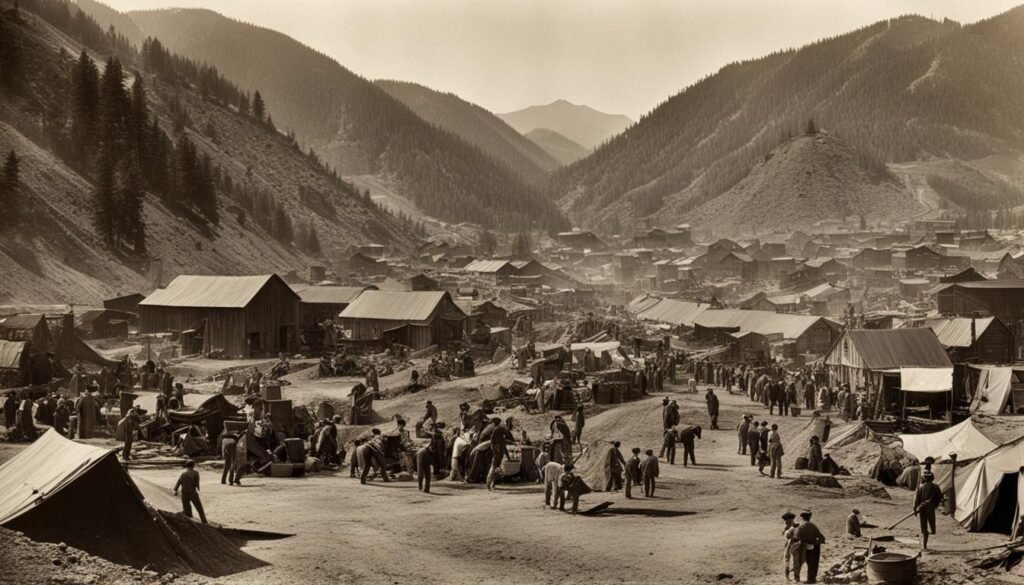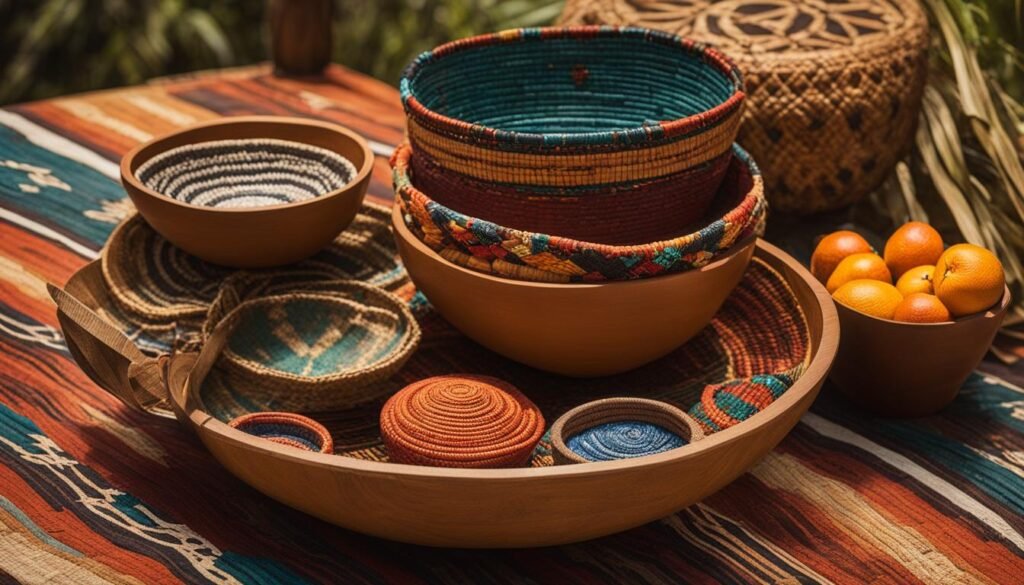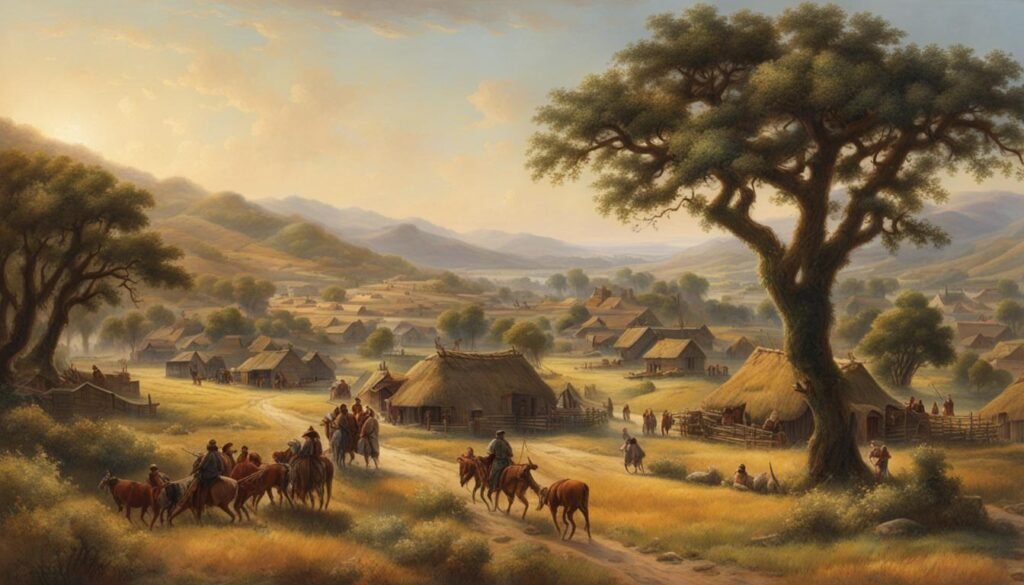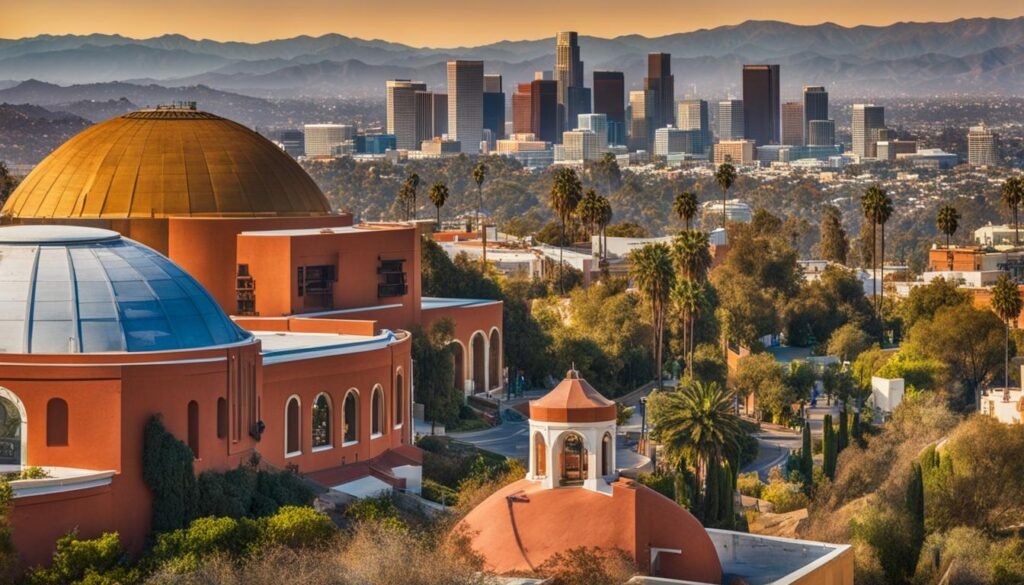As a passionate advocate for wildlife conservation, I am excited to share with you the importance of wildlife corridors in protecting our precious natural heritage. Wildlife corridors, also known as habitat corridors or habitat connectivity, are crucial pathways that enable animals to move freely between fragmented habitats. These corridors play a vital role in maintaining biodiversity, promoting species survival, and fostering ecological resilience.
Key Takeaways:
- Wildlife corridors serve as pathways for animal movement, allowing them to migrate, find mates, and access food and water sources.
- These corridors maintain genetic diversity, enhance species survival, and promote ecological resilience in the face of habitat loss and fragmentation.
- Wildlife corridors facilitate wildlife connectivity, enabling animals to carry out migrations and find suitable habitats.
- They support the conservation of keystone species and contribute to the overall balance and health of ecosystems.
- Designing and creating wildlife corridors require careful planning, collaboration, and consideration of habitat suitability and potential barriers.
Join me as we explore the benefits of wildlife corridors, successful examples of their implementation, and the critical role of policy and funding in their conservation. Together, we can ensure the preservation of our natural world for generations to come.
The Importance of Wildlife Corridors
A wildlife corridor is a protected movement pathway that connects two or more specific areas, allowing animals to move freely between them. These corridors can be narrow strips of habitat, such as rivers, forests, or grasslands, or larger areas that provide connectivity at a regional scale called habitat linkages.
Wildlife corridors facilitate wildlife connectivity, enabling animals to carry out daily, seasonal, and annual migrations, access necessary resources, and find suitable habitats. They play a crucial role in supporting wildlife movement, allowing species to navigate through fragmented landscapes and overcome barriers such as roads and urban development.
By providing these vital connections, wildlife corridors promote the survival and resilience of diverse species. They facilitate the movement of animals, ensuring gene flow and maintaining healthy populations. Wildlife corridors also support ecological processes such as pollination and seed dispersal, contributing to the overall health and balance of ecosystems.
The benefits of wildlife corridors extend beyond individual species. By enhancing connectivity and promoting biodiversity, these corridors contribute to the conservation of our natural heritage. They allow for the adaptation and resilience of ecosystems in the face of climate change and other environmental challenges.
Overall, wildlife corridors are essential for preserving wildlife connectivity, promoting ecological balance, and conserving biodiversity. They represent a vital conservation strategy to safeguard our precious natural resources and ensure the long-term health and survival of wildlife populations.
Benefits of Wildlife Corridors
Wildlife corridors offer a multitude of advantages for both wildlife and the surrounding ecosystems. These corridors serve as vital connections between fragmented habitats, promoting the movement of animals and preventing their isolation. As a result, wildlife corridors play a key role in maintaining genetic diversity, promoting the long-term survival of species, and conserving biodiversity.
One significant benefit of wildlife corridors is their support for keystone species, such as wolves and grizzly bears. These species have a disproportionate impact on their respective ecosystems, influencing the dynamics and balance of other plant and animal populations. By providing them with the ability to move through these corridors, we ensure the functionality and resilience of the entire ecosystem.
Not only do wildlife corridors facilitate the movement of keystone species, but they also enable the migration of iconic species that hold cultural and ecological significance. For instance, wildlife corridors allow pronghorn antelope to undertake their annual migration, ensuring their survival and maintaining healthy populations. Other examples include the migration of monarch butterflies and the spawning of salmon, which are essential for pollination, seed dispersal, and the overall health of ecosystems.
Furthermore, wildlife corridors contribute to ecological balance by facilitating interactions between species and their environments. These corridors support the movement of pollinators, which is crucial for the reproductive success of many plant species. Additionally, they enable seed dispersal, aiding in the establishment of new plant populations and contributing to the overall diversity of plant life.
Overall, wildlife corridors are essential for promoting wildlife movement, conserving biodiversity, and ensuring the resilience of ecosystems. By preserving and creating these habitat connections, we protect the health and well-being of both wildlife and our natural environment.
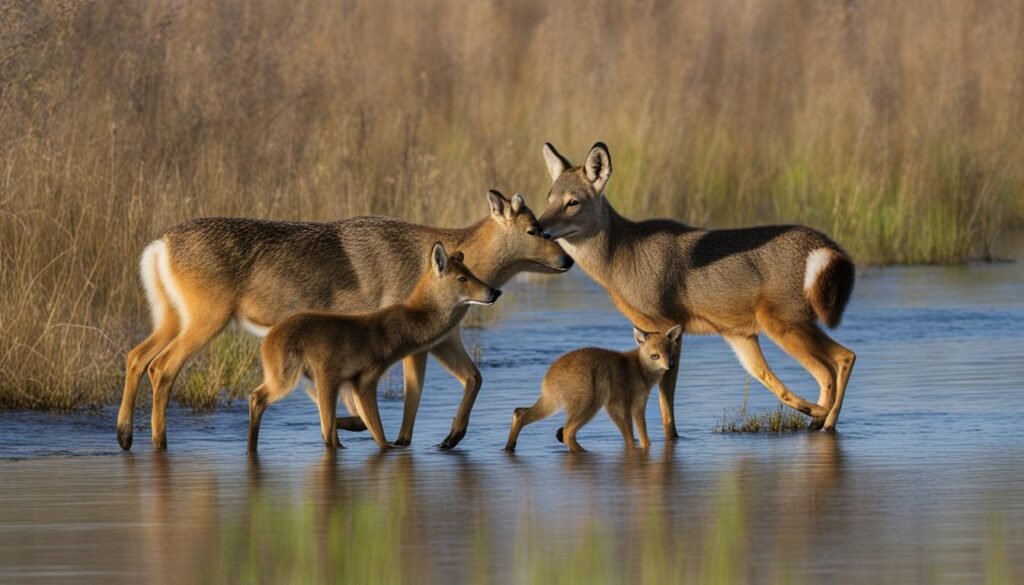
Designing and Creating Wildlife Corridors
Creating wildlife corridors involves a strategic and collaborative effort among multiple stakeholders. This includes government agencies, conservation organizations, landowners, and local communities. Together, we work towards identifying key areas for connectivity, mapping existing habitats, and designing potential corridors to protect and restore these essential pathways.
A successful wildlife corridor design takes into account various factors, such as habitat suitability, landscape connectivity, and potential barriers. These barriers may include roads or developments that impede wildlife movement. By considering the needs of target species, we can ensure that the corridors effectively meet their requirements for migration, access to resources, and finding suitable habitats.
Conservation planning initiatives like the Yellowstone to Yukon Conservation Initiative and the Great Eastern Ranges exemplify large-scale efforts to establish and manage wildlife corridors. These initiatives demonstrate the importance of addressing connectivity challenges on a regional level to protect and enhance wildlife movements.
Key Steps in Creating Wildlife Corridors:
- Identification and assessment of key areas for connectivity
- Mapping and evaluation of existing habitats and potential corridors
- Development and implementation of strategies to protect or restore pathways
- Consideration of habitat suitability and landscape connectivity
- Identification and mitigation of potential barriers
- Inclusion of the needs of target species in corridor design
The Role of Policy and Funding in Wildlife Corridor Conservation
Conserving wildlife corridors requires the presence of supportive policies and adequate funding. Governments at the federal, state, and tribal levels play a vital role in developing and implementing policies that promote the protection and management of these essential habitats. These policies aim to establish guidelines for corridor planning, conservation planning, and overall wildlife conservation.
Effective corridor planning involves considering factors such as landscape connectivity, habitat suitability, and potential barriers that impede wildlife movement, such as roads and development. By incorporating wildlife crossings into transportation infrastructure and enhancing the resilience of agricultural lands, we can foster the preservation and restoration of wildlife corridors.
Financial support is crucial for implementing projects aimed at securing migration paths and restoring critical habitats. Funding programs, grants, and partnerships with conservation organizations like The Pew Charitable Trusts, the U.S. Department of Agriculture, and the Department of the Interior provide the necessary resources to drive corridor conservation efforts.
Understanding the significance of maintaining ecological connectivity and conserving biodiversity, these organizations work alongside government agencies to secure the future of wildlife corridors. With their help, we can ensure the long-term sustainability of wildlife populations and protect their habitats.

Success Stories and Examples of Wildlife Corridors
Wildlife corridors have proven to be effective in promoting ecological connectivity and preserving species across various regions in the United States. These natural pathways for wildlife, also known as habitat corridors, serve as essential links that enable animals to move freely between habitats, find resources, and adapt to changing environments.
One notable example of a successful wildlife corridor is the “Path of the Pronghorn” in Wyoming. This federally designated corridor facilitates the annual migration of pronghorn antelope, allowing them to travel safely between their summer and winter habitats. By preserving this wildlife pathway, conservation efforts can ensure the survival of these iconic animals and maintain the ecological balance of the surrounding landscape.
The Florida Panther National Wildlife Refuge and its surrounding areas provide another inspiring example of a habitat corridor. This network of protected lands creates a safe haven for the endangered Florida panther, allowing them to roam and mate across their natural range. Through the establishment of this wildlife corridor, conservationists strive to increase the population of these magnificent big cats and preserve the biodiversity of the region.
In Arizona, the construction of wildlife bridges and underpasses along State Route 77 has significantly enhanced connectivity for a wide range of animals. These structures facilitate safe passage for bobcats, tortoises, and mule deer, reducing the risk of wildlife-vehicle collisions and ensuring the continuity of their natural movements. This innovative approach to wildlife corridor design showcases the commitment to conserving biodiversity and protecting wildlife habitats in the state.
These success stories highlight the importance of wildlife corridors in preserving species, promoting ecological connectivity, and conserving the natural heritage of the United States. By implementing strategic conservation initiatives and protecting these pathways for wildlife, we can create a more sustainable future for both animals and humans alike.
Conclusion
Wildlife corridors are crucial for the conservation of nature and the preservation of biodiversity. These corridors serve as pathways that promote the movement of wildlife, facilitate ecological connectivity, and ensure landscape connectivity. By enabling animals to migrate and access important resources, wildlife corridors contribute to the health and resilience of ecosystems.
One of the most significant benefits of wildlife corridors is their role in conserving biodiversity. By connecting fragmented habitats, these corridors prevent isolation and inbreeding of populations, ensuring the maintenance of genetic diversity. Additionally, they support the movements of keystone species and enable the migration of iconic species, contributing to the overall balance and well-being of ecosystems.
Protecting and creating wildlife corridors require collaborative efforts, the implementation of sound policies, and adequate funding. Governments, conservation organizations, landowners, and local communities must work together to identify key areas for connectivity, map existing habitats, and protect or restore these valuable pathways. With continued commitment and investment, wildlife corridors have the potential to mitigate the impacts of habitat loss, fragmentation, and climate change, promoting a sustainable future for both wildlife and humans.
FAQ
What are wildlife corridors?
Wildlife corridors, also known as habitat corridors or habitat connectivity, are protected movement pathways that connect two or more specific areas, allowing animals to move freely between them.
Why are wildlife corridors important?
Wildlife corridors are important because they allow animals to migrate, find mates, access food and water sources, and adapt to changing environments. They also help maintain genetic diversity, enhance species survival, and promote ecological resilience.
What are the benefits of wildlife corridors?
Wildlife corridors provide numerous benefits, including maintaining genetic diversity, preventing isolation and inbreeding of populations, supporting the movements of keystone species, facilitating species migration, enhancing pollination and seed dispersal, and conserving biodiversity.
How are wildlife corridors designed and created?
Designing and creating wildlife corridors involves careful planning and collaboration among stakeholders. The process includes identifying key areas for connectivity, mapping existing habitats and potential corridors, and implementing strategies to protect or restore these pathways.
What is the role of policy and funding in wildlife corridor conservation?
Policy and funding play a crucial role in wildlife corridor conservation. Governments develop and implement policies that promote the protection and management of wildlife corridors, while funding programs, grants, and partnerships provide financial support for projects aimed at securing migration paths and restoring critical wildlife habitats.
Can you provide examples of wildlife corridors?
Some notable examples of wildlife corridors include the “Path of the Pronghorn” in Wyoming, the Florida Panther National Wildlife Refuge, and the wildlife bridges and underpasses along State Route 77 in Arizona.
What is the importance of wildlife corridors for promoting ecological connectivity?
Wildlife corridors promote ecological connectivity by allowing for wildlife movement, maintaining healthy ecosystems, resilient species populations, and critical ecological processes. They help mitigate the impacts of habitat loss, fragmentation, and climate change.


